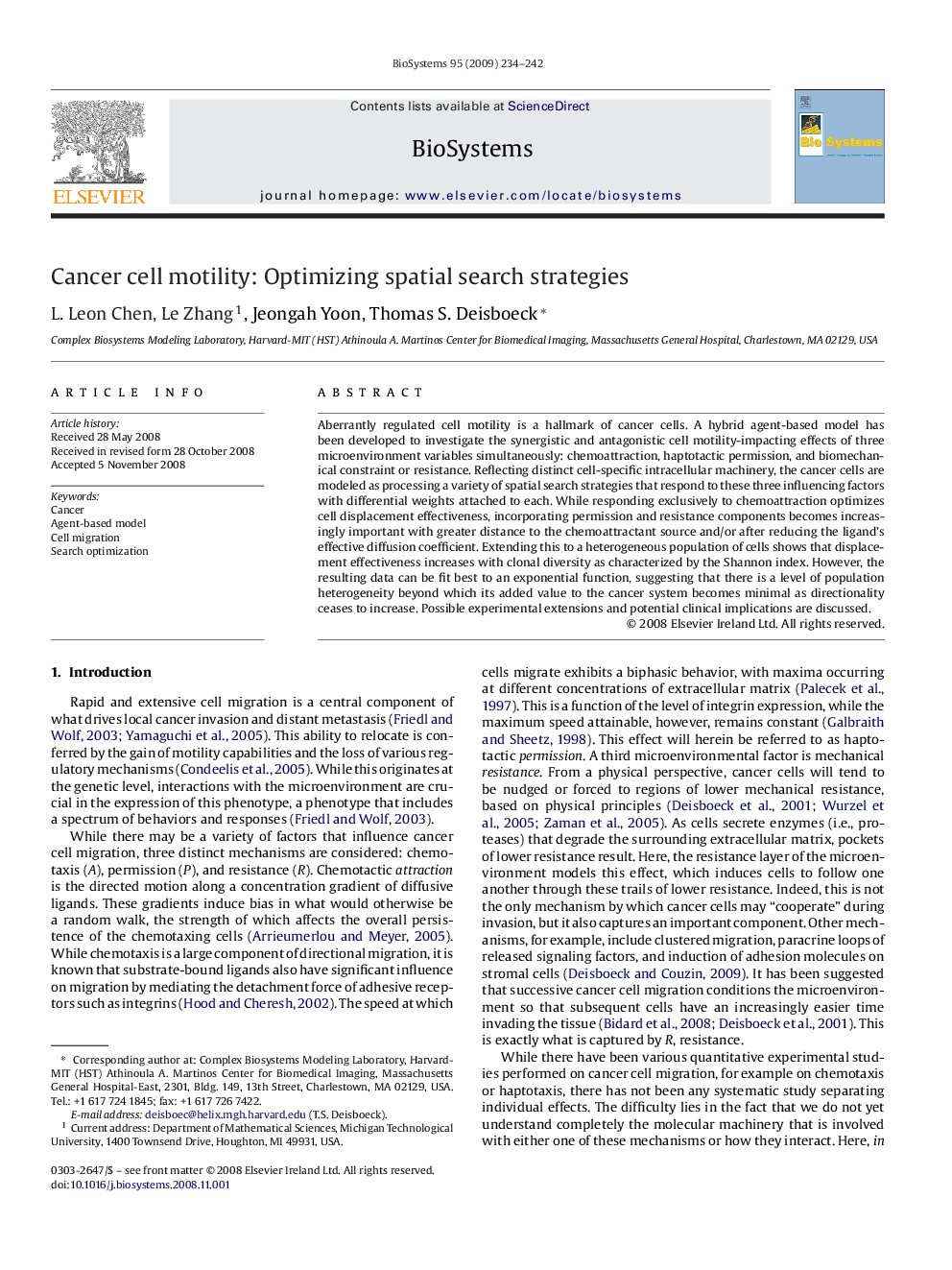| Article ID | Journal | Published Year | Pages | File Type |
|---|---|---|---|---|
| 2076501 | Biosystems | 2009 | 9 Pages |
Aberrantly regulated cell motility is a hallmark of cancer cells. A hybrid agent-based model has been developed to investigate the synergistic and antagonistic cell motility-impacting effects of three microenvironment variables simultaneously: chemoattraction, haptotactic permission, and biomechanical constraint or resistance. Reflecting distinct cell-specific intracellular machinery, the cancer cells are modeled as processing a variety of spatial search strategies that respond to these three influencing factors with differential weights attached to each. While responding exclusively to chemoattraction optimizes cell displacement effectiveness, incorporating permission and resistance components becomes increasingly important with greater distance to the chemoattractant source and/or after reducing the ligand's effective diffusion coefficient. Extending this to a heterogeneous population of cells shows that displacement effectiveness increases with clonal diversity as characterized by the Shannon index. However, the resulting data can be fit best to an exponential function, suggesting that there is a level of population heterogeneity beyond which its added value to the cancer system becomes minimal as directionality ceases to increase. Possible experimental extensions and potential clinical implications are discussed.
